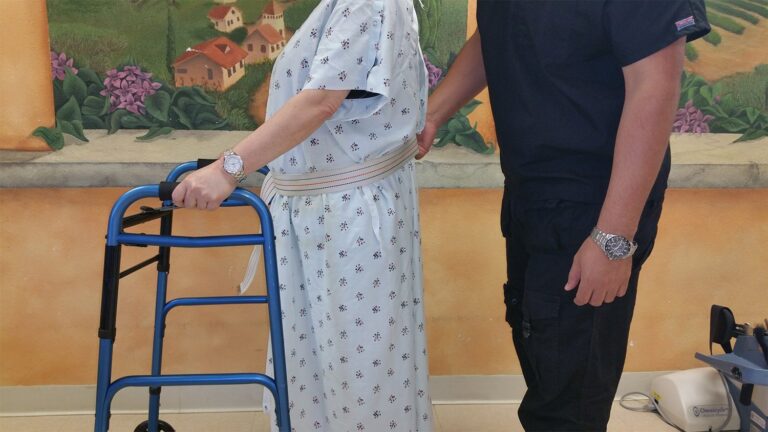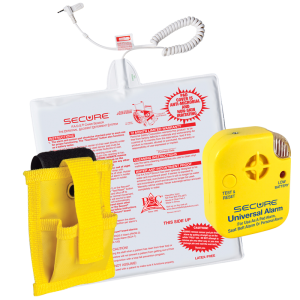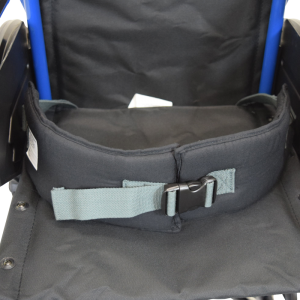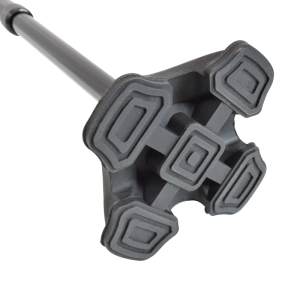
Enhancing Patient Mobility and Safety with Gait Belts
Gait belts are a useful and important tool for elderly fall prevention, as they provide the physical support needed to help seniors with mobility issues to walk or transfer safely. Falls are a leading cause of injury among older adults, and can result in serious consequences, such as fractures, head injuries, and loss of independence.
By using a gait belt, nurses and caregivers can provide additional support to the patient as they walk or move around, reducing the risk of falls. The belt allows the caregiver to hold onto the patient without having to lift them, which can help to maintain the patient’s natural walking posture and improve their balance. Additionally, gait belts provide a secure grip for the caregiver, helping to prevent slips or falls.
In this article, we will discuss the different types of gait belts and how to use them safely and effectively.
Important reminders when using a gait belt:
- Always make sure there is clothing between the patient’s skin and the belt to prevent abrasion.
- Be sure to securely fasten the gait belt buckle when putting the gait belt on the patient.
- The patient should always be close to the caregiver during transfers.
- Always transfer the patient to their stronger side.

Benefits of a Gait Belt
Gait belts provide nurses, CNA’s, nurse aids, and at-home caregivers with an effective solution for musculoskeletal injury prevention and overall patient safety. They are a safe and reliable tool for transferring and mobilizing partially dependent patients with weight-bearing capacity. The advantages of using a gait belt include increased safety, improved control, and reduced risk of injury to both the patient and caregiver. Gait belts can be used in teams or alone, require minimal training, and are less expensive than other forms of patient handling equipment such as lifts and other transfer aids.
Gait belts are an important tool for fall-risk patient care and should be used with the proper technique in mind. The importance of using a gait belt correctly cannot be overstated, as incorrect use may increase the risk of injury to both the patient and caregiver.
Here are four ways gait belts promote independence and mobility:
1. Assisting in transfers: Whether it’s moving from a bed to a wheelchair or getting up from a chair, gait belts provide stability and support, reducing the risk of falls. This is especially beneficial for seniors who may have difficulty with balance.
2. Aiding in walking: Gait belts with handles allow caregivers to provide a firm grip and maintain balance while guiding individuals during walking or physical therapy sessions. This ensures safety and promotes confidence in mobility.
3. Enhancing daily activities: Gait belts for seniors can assist with activities of daily living, such as getting dressed or using the bathroom. By providing support and stability, gait belts enable individuals to perform these tasks more independently.
4. Facilitating physical therapy: Gait belts are commonly used in physical therapy settings to assist patients in improving their mobility and strength. With the help of a gait belt, a physical therapist can safely help a patient practice walking and transferring techniques, leading to greater independence and mobility in their daily lives as they recover from an injury.
Preparing for the use of a Gait Belt
Before using a gait belt, it is important to ensure that it is properly positioned and secured. The right gait belt selection, proper sizing, and secure fastening are all essential to ensure patient safety. Here are a few important steps to keep in mind:
1. Choose the right type of gait belt. Consider factors such as length, width, material, buckle type, and whether handles are needed for additional support.
2. The size of the gait belt should be appropriate for the patient’s waist circumference, allowing for a snug fit without being too tight or too loose during transfers.
3. Fasten the transfer belt around the patient making sure the buckle is fully secure.
It is also important to keep the gait belt clean and in good condition. Regular cleaning and maintenance can help ensure the longevity and reliability of the belt. Additionally, it is essential to ensure that the patient is comfortable while using the gait belt, and that there is a layer of clothing between the belt and the skin to avoid abrasion.
With the right preparation, gait belts can be a safe and effective tool for maneuvering and transferring patients.

Proper Positioning for Gait Belt Use
Securely fasten the gait belt around the patient for proper positioning. When using a gait belt, it is important to take extra care in ensuring it is properly aligned with the patient’s center of gravity. Common mistakes in gait belt positioning include too high of a placement, too low of a placement, and improper tightening.
When adjusting the tightness of the gait belt, it is important to ensure the patient has enough support while still leaving enough room to breathe.
It is also essential to check that the gait belt is securely fastened before beginning any transfer.
Communication is key during gait belt transfers, as it allows for the patient and caregiver to be in sync and understand each other’s needs.
Tips for Safe and Effective Gait Belt Use
When using a gait belt, it is important to adhere to certain safety guidelines for safe and effective transfer.
To ensure the best possible outcome, the following tips should be kept in mind:
1. Avoid common gait belt mistakes, such as improper sizing or incorrect placement.
2. Be aware of gait belt alternatives, such as mechanical lifts, which may be more suitable for certain cases.
3. Follow gait belt safety precautions, such as ensuring a layer of clothing is between the patient’s skin and the belt.
4. Make sure to properly size the gait belt so that it is secure and comfortable.
5. Consider incorporating a gait belt training program to ensure optimal safety.
Conclusion
Gait belts provide a safe and secure method of transferring and supporting elderly fall-risk patients, seniors, handicapped, and those at risk of falling. When used properly, transfer belts can reduce the risk of musculoskeletal injury while providing stability and support to those who are partially dependent. It is essential that nurses and nurse aides understand how to correctly use a gait belt. Effective use of a gait belt can help ensure the safety of patients and reduce the risk of injury.
Gait belts are a crucial tool for healthcare professionals and caregivers in attractive mobility and safety for their patients. By providing stability and support during various movements, gait belts help prevent falls and promote independence.













